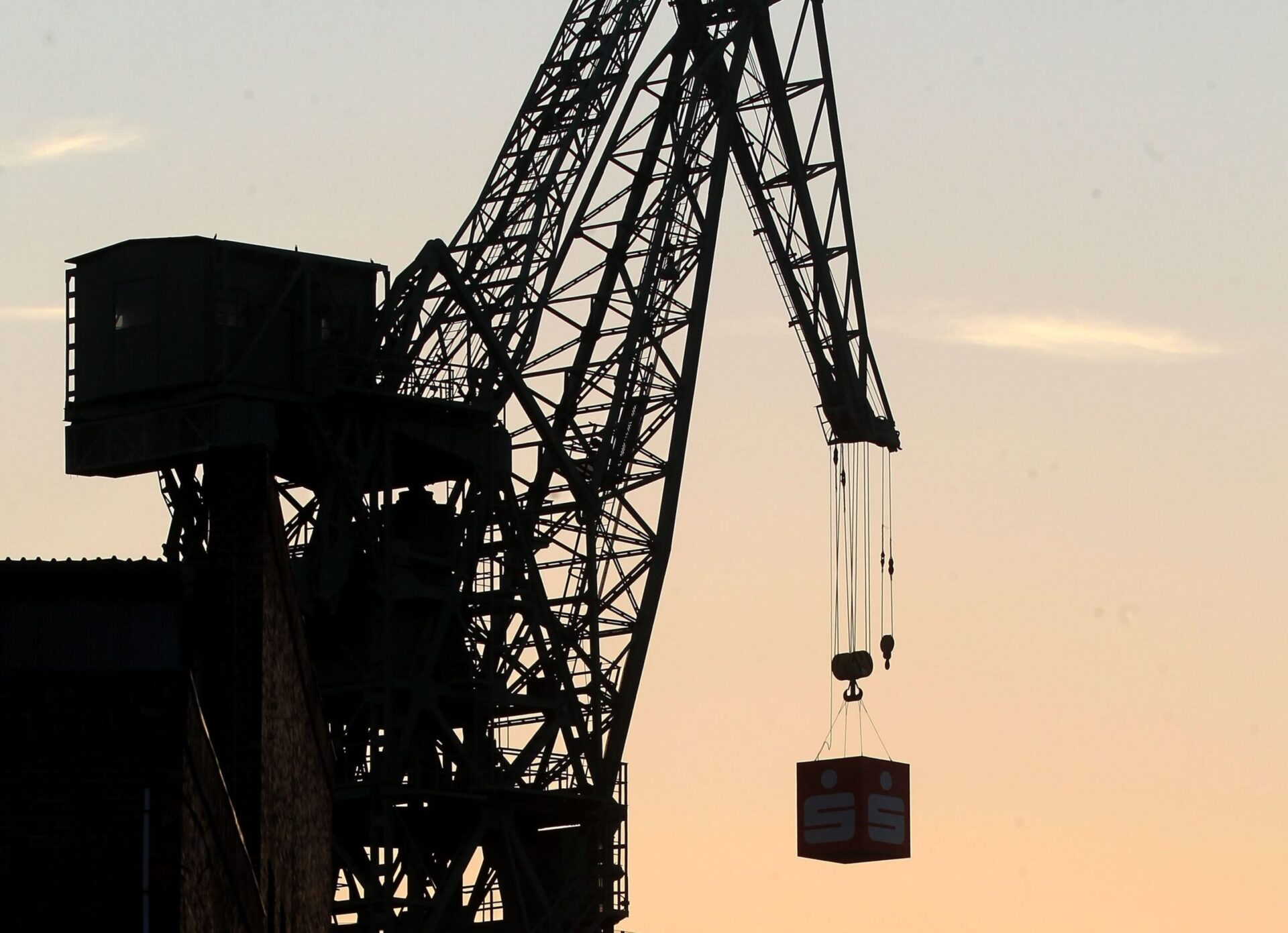
The Eber assembly crane has become a landmark of our family garden and the industrial landscape, in particular. There is an observation deck on top of the crane and the way up is already an experience.
Familiengarten Eberswalde
Eberkran Assembly Crane
Informationen
„The Eber assembly crane has become a landmark of our family garden and the industrial landscape, in particular. There is an observation deck on top of the crane and the way up is already an experience.”
Enjoy the wide view from the observation deck of the area of the Family-Garden and the historic industrial buildings! The Eber assembly crane was built in 1954 as model for an assembly crane series. It remained on the factory premises and was used for the preassembly of other cranes. Due to its striking silhouette, it still serves as landmark of the industrial landscape of the Finow valley today.
There is an assembly crane in the Eberswalde family garden, which can be seen from afar and is affectionately called “Eber”. Its viewing platform affords views of historical industrial buildings, such as the site of the former Ardelt factories next door, which played an important role in the industrial history of Eberswalde. It can be viewed when you visit the Eberwalde family garden.
As early as 1904, he and his technically highly trained sons founded the Robert Ardelt & Söhne machine factory at Eisenbahnstrasse 38. Production on the premises at Heegermühlerstrasse started in 1911. The company soon had customers from around the world thanks to its founders’ high level of expertise and business acumen. The factory produced foundry machines, gearboxes for railways and lorries, induced draught and dust extraction systems as well as cranes of all shapes and sizes. In 1932 the Ardelt factory filed a patent for a double jib luffing system on slewing cranes, which allows the crane load to be moved virtually horizontally.
During the two world wars, the Ardelt factories produced armaments on a large scale. From 1943, it was mainly female prisoners from the external camp of Ravensbrück concentration camp who were forced to perform heavy labour. In 1944, 3833 of the 6940 factory employees were forced labourers and prisoners of war. In 1945 the Soviet army almost completely dismantled the factory, which had survived the war almost intact. In 1948, VEB Kranbau Eberswalde resumed production. Until the fall of communism, it was the leading specialist company for harbour and shipyard cranes in Europe.
Today’s successor company, Kocks Ardelt Kranbau GmbH, is still the global market leader for double jib cranes, which are based on the patent from 1932.
The “Eber” crane is part of the Eberswalde high altitude pass.
Technical data of the crane
Load capacity
- Main hoist: 32.0 t
- Auxiliary hoist: 0.5 t
Working speed and installed capacity
- Main hoisting gear: 10.0 m/min 64 kW
- Auxiliary hoisting gear: 30.0 m/min 27 kW
- Slewing gear: 64 U/min 20 kW
- Luffing gear: 9 min 12 kW
- Gear: 25.0 m/min 8×6 kW
Weight
- Construction weight: approx. 326 t
- Ballast in the tower: 102 t
- Fixed counterweight: 28 t
- Movable counterweight: 44 t
- Operating height: approx. 500 t
- Construction height: approx. 58 m
Visitor deck
- Construction weight: approx. 16 t
- Load: maximum of 50 persons (5,000 kg)
- Deck height: approx. 30 m
Overview Map
Eberkran Assembly Crane

